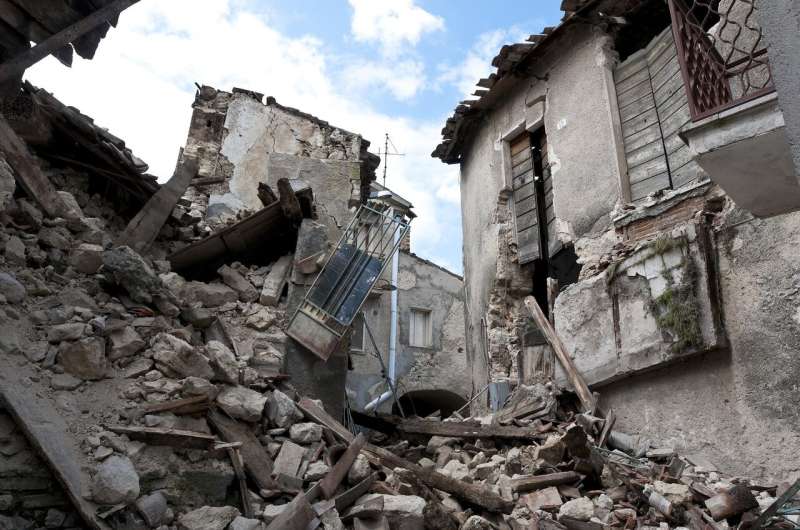Earthquakes, hurricanes and other natural disasters obey same mathematical pattern

Tracking the magnitude of several catastrophic natural events and drawing a graphic of how many episodes of each have occurred throughout history yields a result which cannot be ignored. Quite on the contrary, what the graphic reveals is a highly defined curve which luckily shows that the stronger the capacity to devastate, the less frequently the episode occurs. For example, very few earthquakes are devastating, but small earthquakes occur frequently, most of them so weak that people do not perceive them and they are only detected by highly sensitive sensors. This information is essential when calculating any associated risks.
However, this dependence is not always as obvious nor does it adjust to the same mathematical function, particularly in the case of larger events. Álvaro Corral and Álvaro González, researchers at the Centre for Mathematical Research (CRM) and the UAB Department of Mathematics, have conducted the most precise statistical analysis existing up to date of the entire set of natural phenomena capable of causing disasters: earthquakes, hurricanes, forest fires, meteorite impacts, torrential rains and land subsidence caused by karst phenomena (in which groundwater erodes rock).
After analysing the data of thousands of different episodes of each of these natural phenomena, researchers were able to use one same mathematical technique to describe the functions related to the frequency of these phenomena and the value of their magnitude or size. The majority of them are ruled by the power law, in which events occur more frequently the smaller they are, without any definition of a "normal" or typical size.
Nevertheless, the frequency of other events, such as forest fires, follows a different mathematical distribution, known as the lognormal distribution, regardless of whether they are small episodes or devastating fires which can burn up to hundreds of thousands of acres of land.
The study made it possible to specify exactly how these functions adjust in each case, and whether they continue to be valid or not for limit cases (e.g., extremely large magnitude events), with the aim of using the same patterns to describe events of a great variety of magnitudes and also of very different origins.
"Thanks to this study there will be an improvement in the risk estimations of catastrophic events occuring in different parts of the world, depending on the historical registry of each region," Álvaro Corral affirms.
The scientists find it remarkable that such diverse natural phenomena follow a power law distribution. According to Corral, "some interpretations point to this occuring when the phenomenon displays what is called an 'avalanche' behaviour, quickly releasing energy it has accumulated over time; but there is still much to be investigated in this area."
For example, forest fires are an exception to the rule, given that they could also be defined as 'avalanches' suddenly releasing energy accumulated in the form of biomass. "We do not know in detail why some 'avalanche' phenomena follow a lognormal distribution, and this actually contradicts previous studies. Better physical models will be necessary to explain the magnitude reached by these processes," the authors point out.
The research, published recently in the journal Earth and Space Science, was conducted by Álvaro Corral, researcher at the Centre for Mathematical Research (CRM) and the UAB Department of Mathematics, the Barcelona Graduate School of Mathematics and the Complexity Science Hub Vienna, in collaboration with Álvaro González, also from the Centre for Mathematical Research (CRM).
More information: Álvaro Corral et al. Power Law Size Distributions in Geoscience Revisited, Earth and Space Science (2019). DOI: 10.1029/2018ea000479
Provided by Autonomous University of Barcelona



















